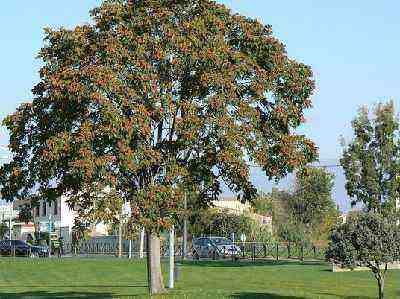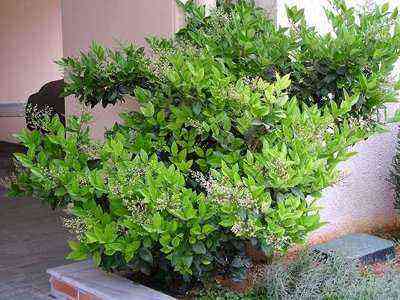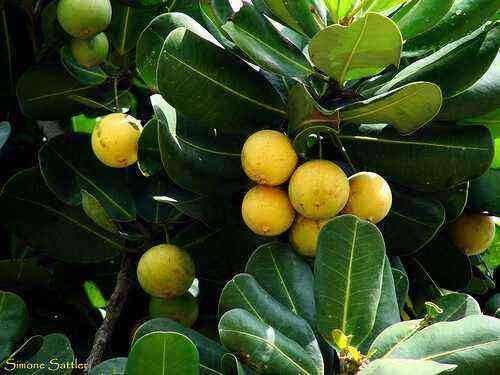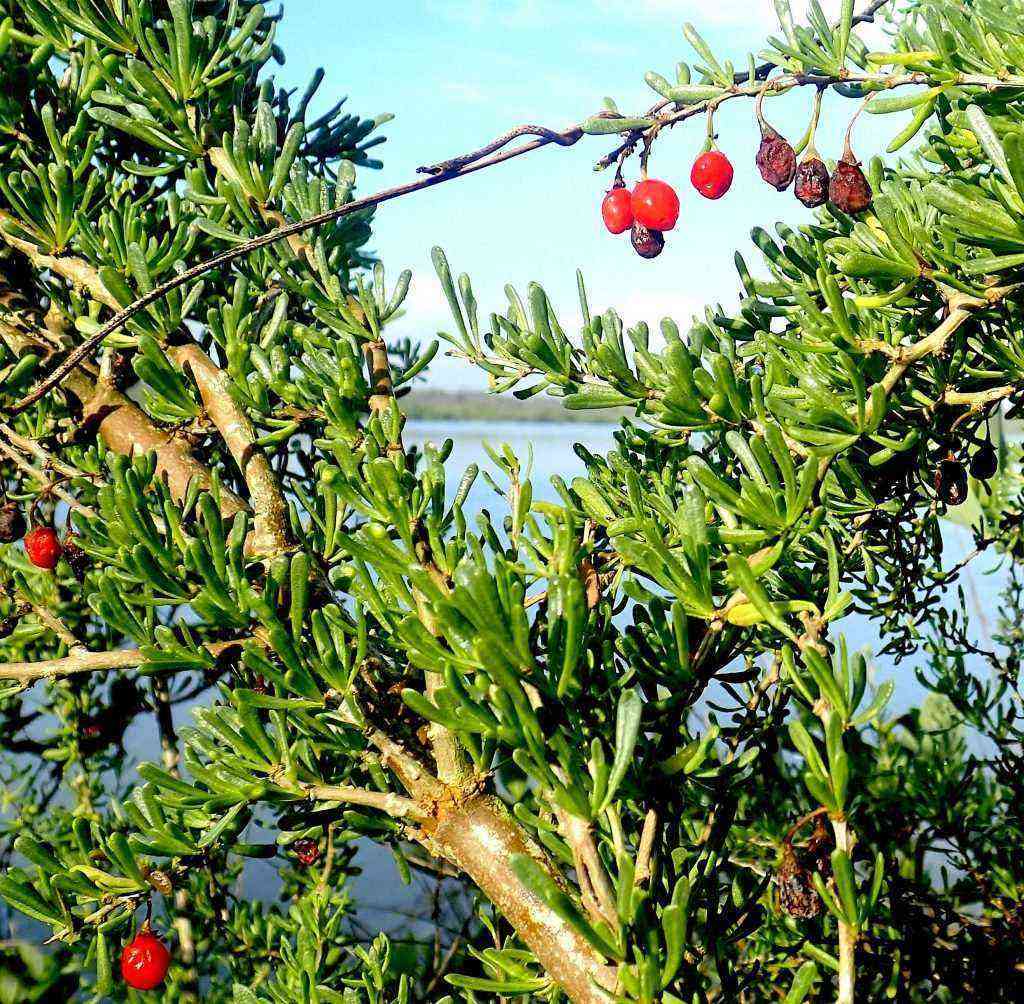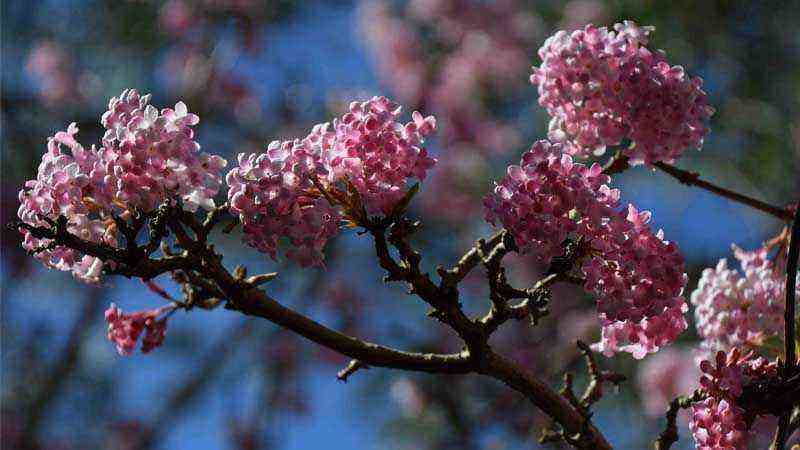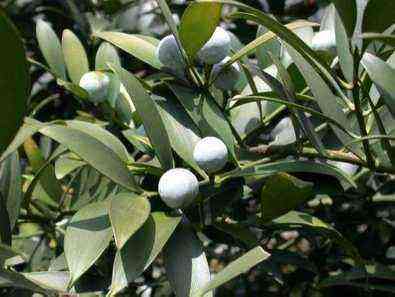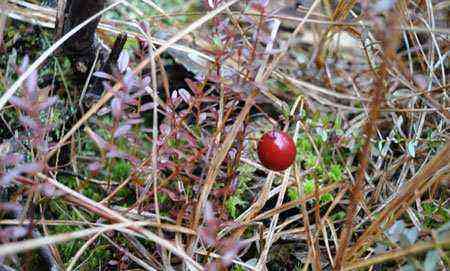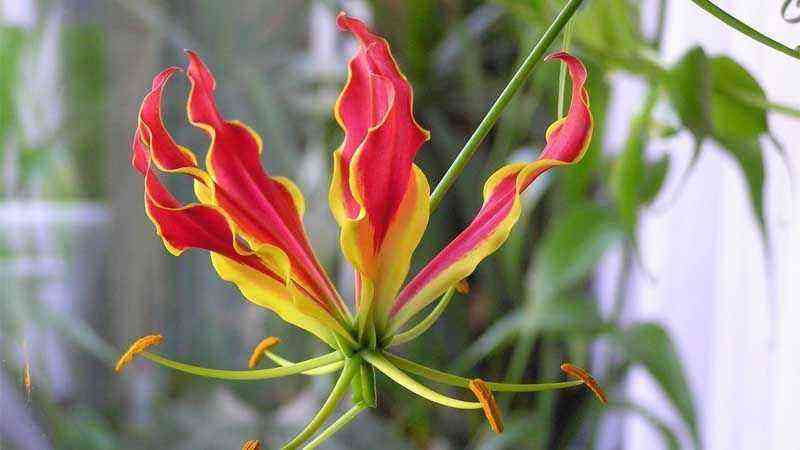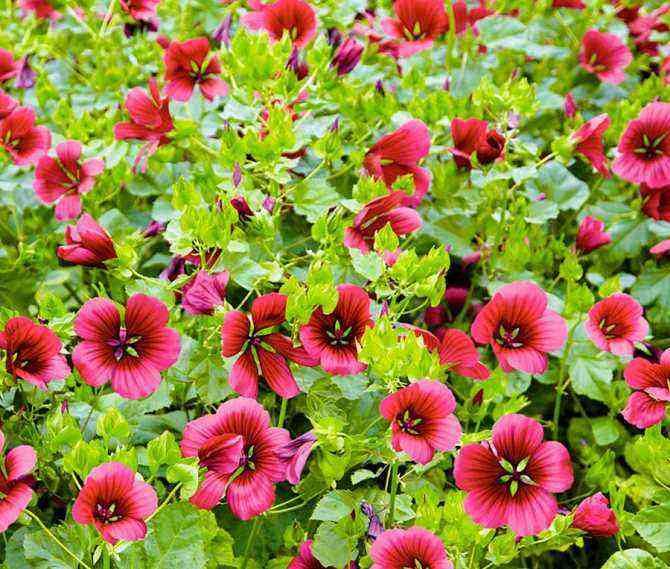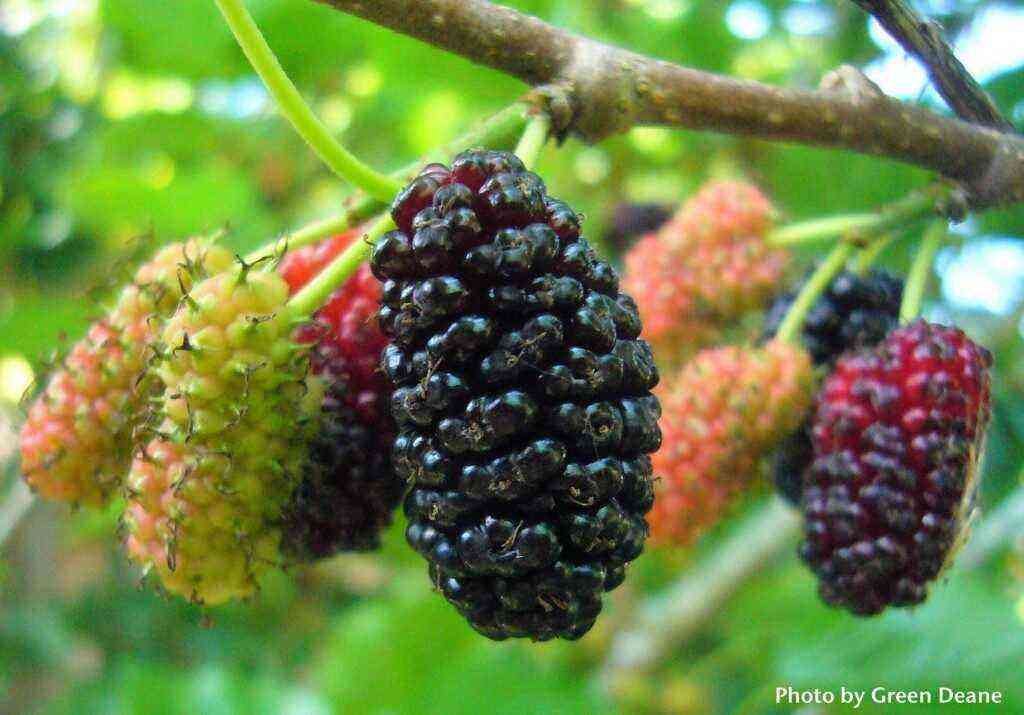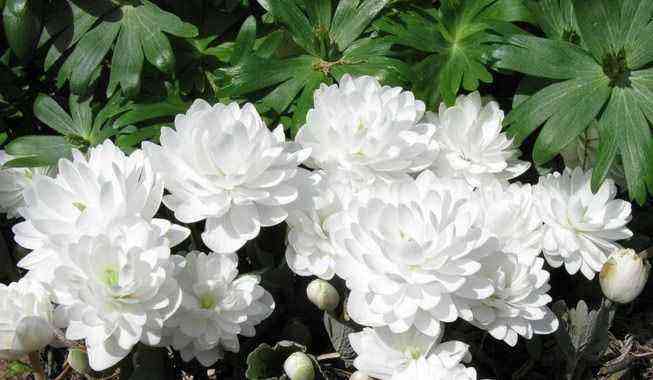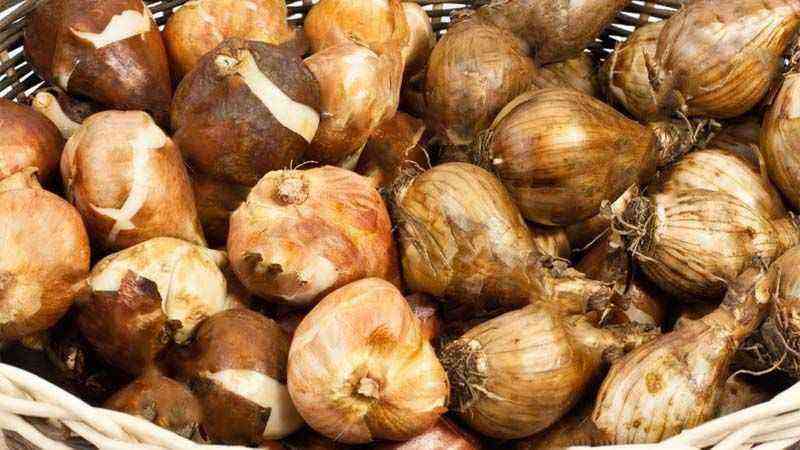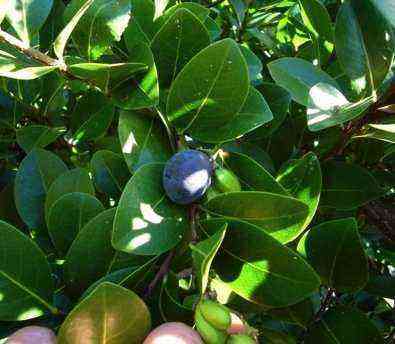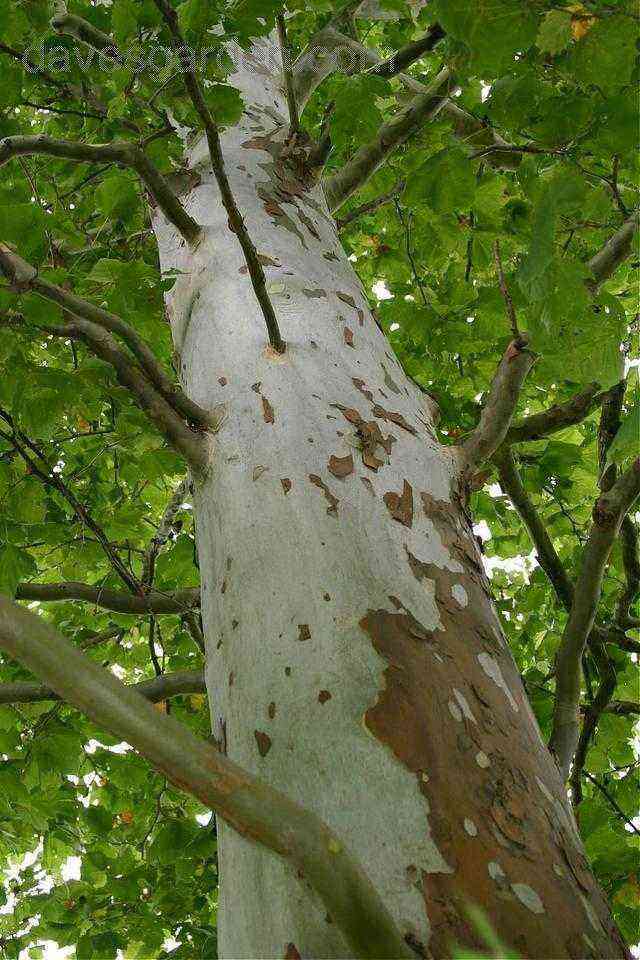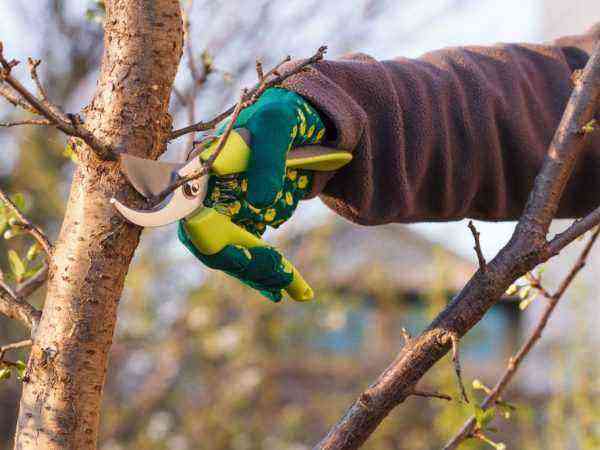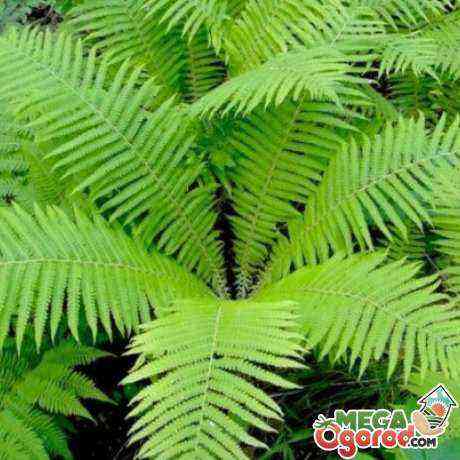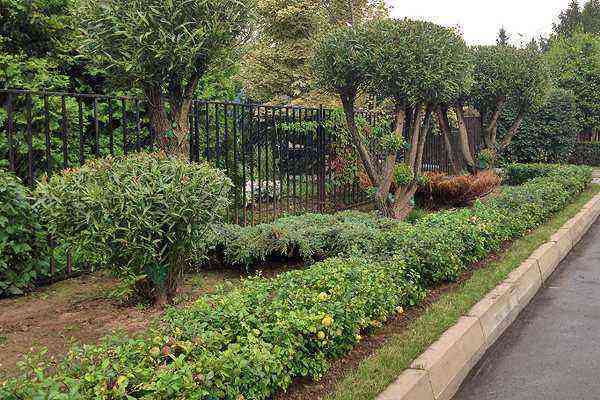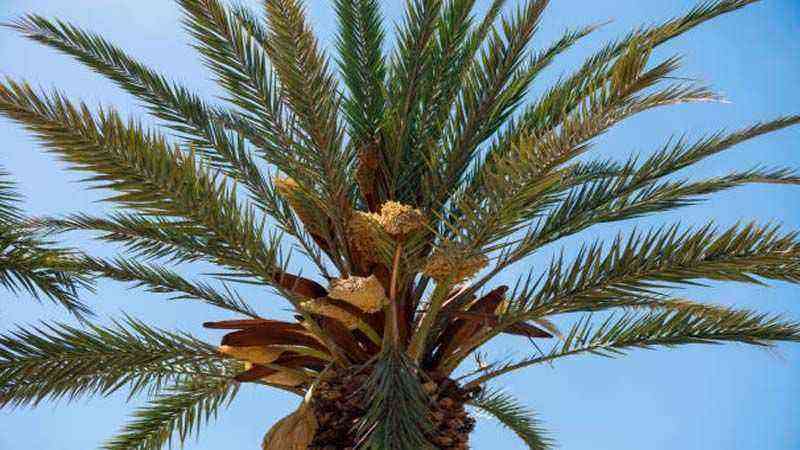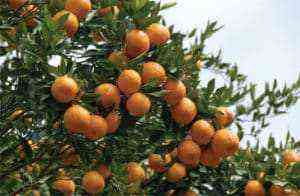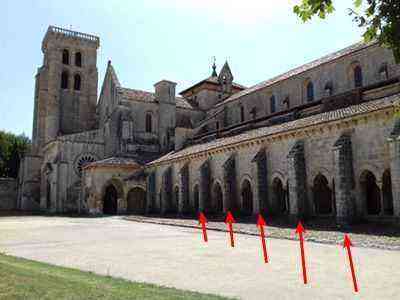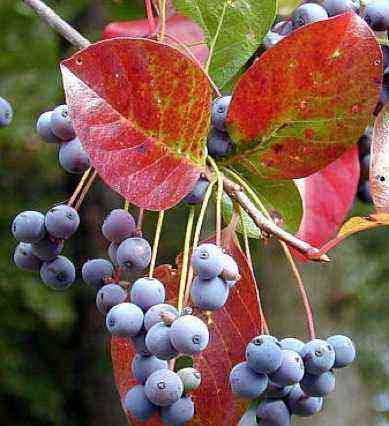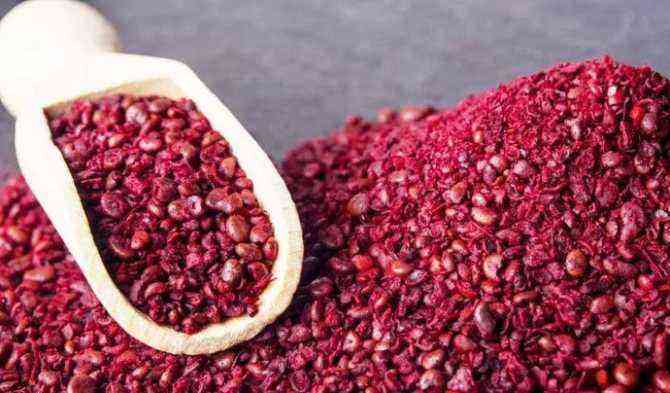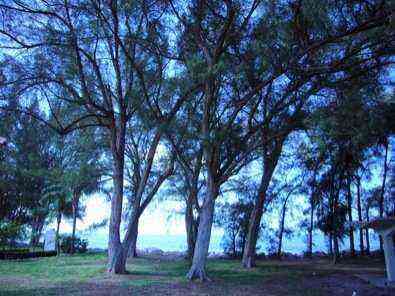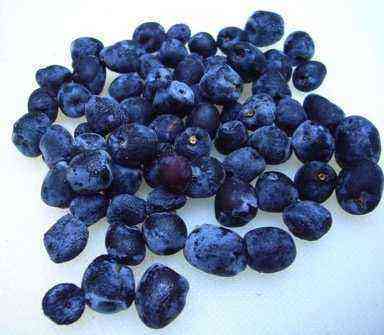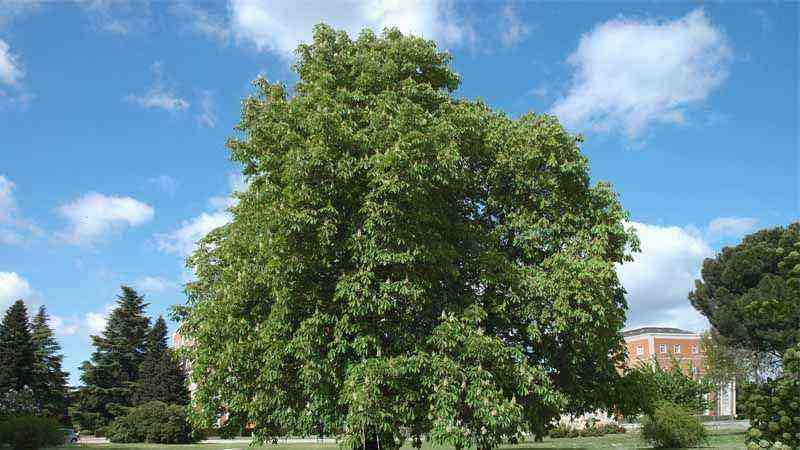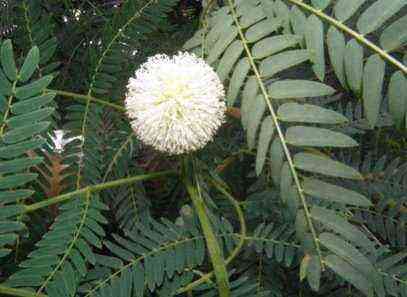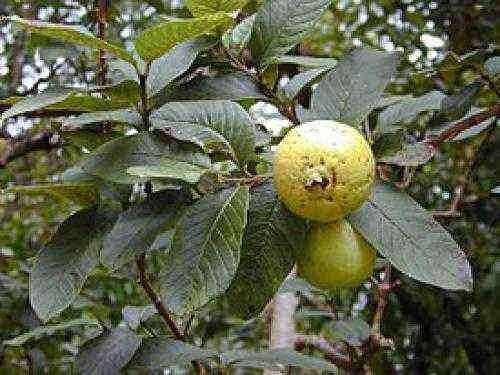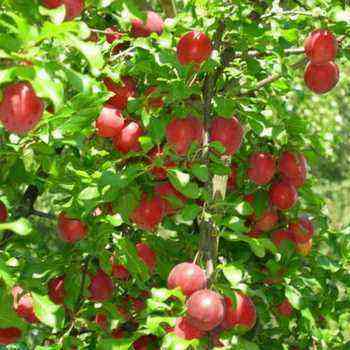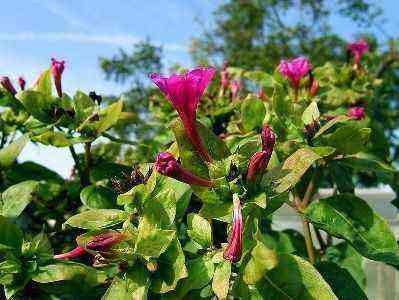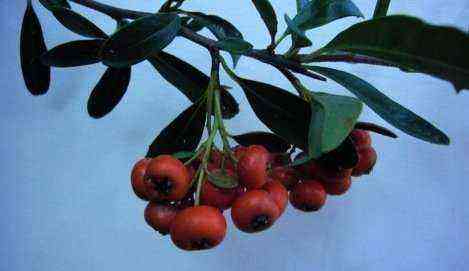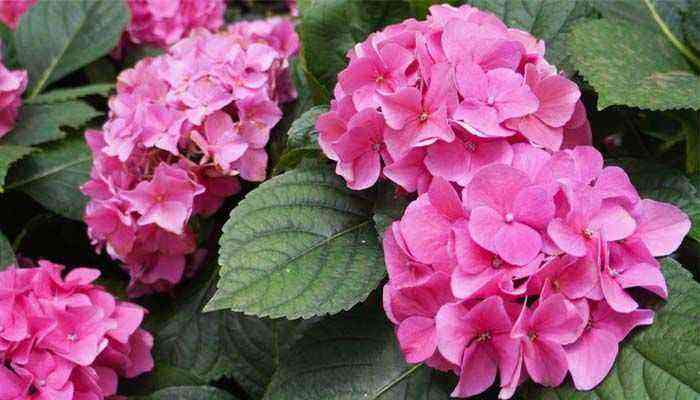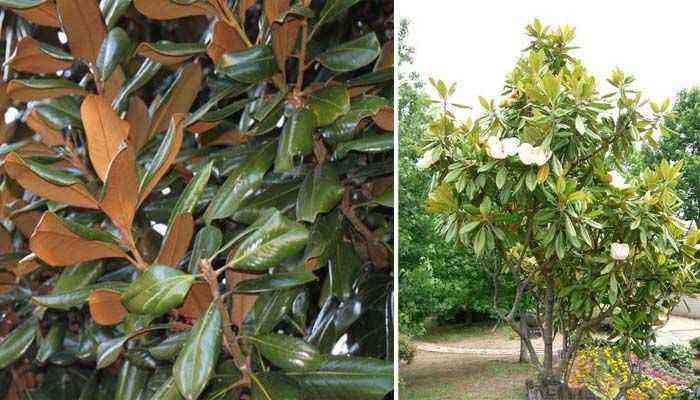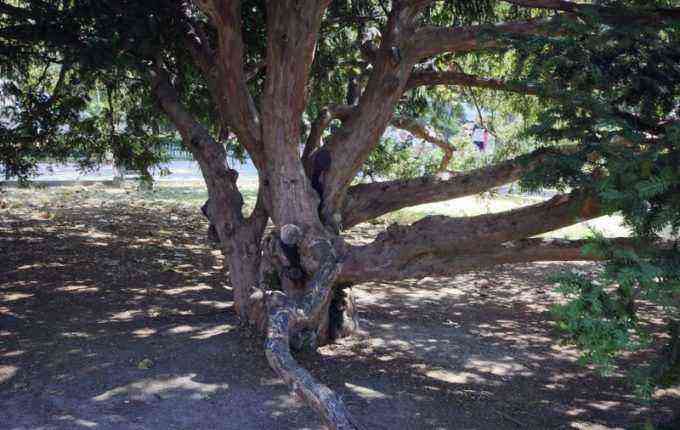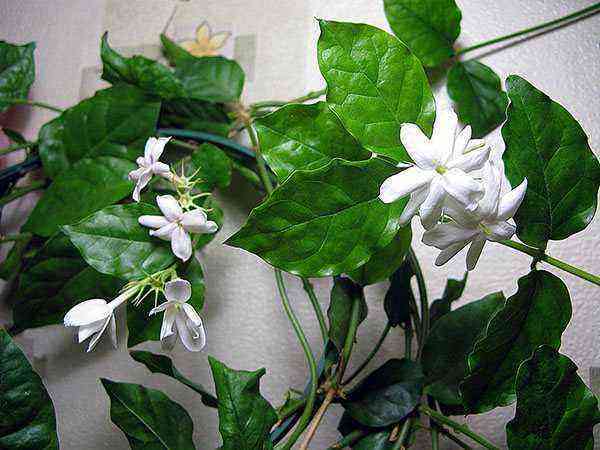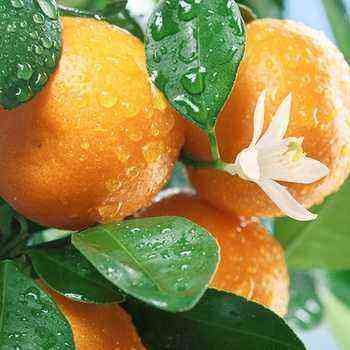Growing garden plants is not only fun, but also good for your health. In case of stressful situations, it is enough to switch to caring for them and devote yourself to gardening.
Most of the plants and shrubs grown are not extraordinary. The reason lies in the reluctance to take on complex and rarely seen floral specimens.
For a long time there was a cotoneaster among them, but every year its popularity only increases. This is a specific shrub that requires careful care at an early stage, but in return it is able to magnificently transform a garden, a summer house and a city park, as well as heal from many diseases.
Biological description of the horizontal cotoneaster
It is a creeping and evergreen culture. Its height rarely exceeds 50 cm. Shoots are dense and branched. The diameter of the shrub can be up to 1,5 metersbecause its branches are very spreading.
Horizontal cotoneaster
Rounded leaves have a diameter of no more than 1,5 cm. They have a dark green color. Only in the autumn period do they acquire a crimson hue.
In the spring, the cotoneaster blooms for 3 weeks… The flowers are small, so they are practically invisible. Coloring – pink with a reddish tint.
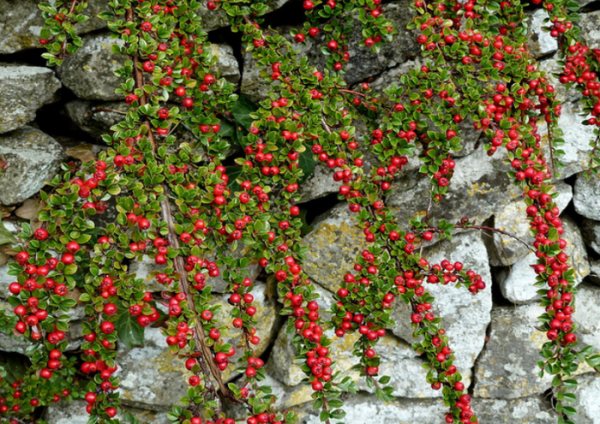
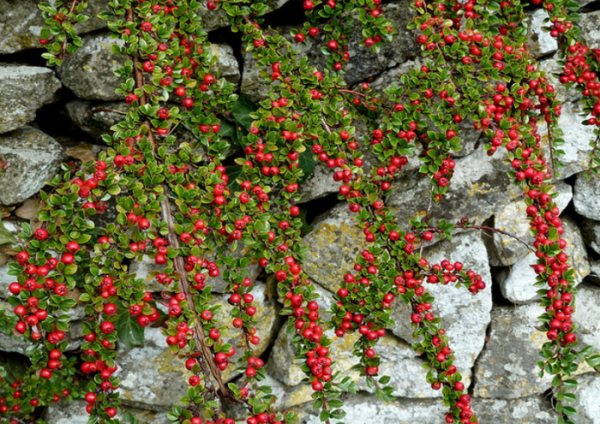
The fruits of the horizontal cotoneaster are red, spherical in shape
In early autumn, the shrub forms spherical fruits.… Their diameter is no more than 5 mm. They have a deep red color. They can hang on cotoneaster branches until deep winter. They are the main decoration of the cotoneaster in the autumn-winter period.
The fruits of the horizontal cotoneaster do not contain toxic substances, but they are not suitable for consumption.
Main characteristics
China is considered the birthplace of the cotoneaster, but today it most often grows in the Irkutsk region and Buryatia. The natural conditions of his stay are rocky mountain areas or a rocky river bank. However, cotoneaster shrubs are found in parks and garden areas as an ornamental plant. Due to its unique appearance, the shrub attracts the attention of others and brings harmony to any landscape. Most often it is used as:
- hedges for dividing the site into several zones;
- decorative border;
- living sculptures to decorate the territory.
Considerable attractiveness to the shrubs is given by glossy little berries spherical and dark blue in color, which appear at the end of May and adorn it before the arrival of winter. The shrub begins to bear fruit only four years after planting. Thanks to its qualities and the structure of the larch, the shrub can be given a certain shape. It is unpretentious, which makes it possible to use it for various purposes. It grows slowly, but its age can reach 50 years.
Landing
Cotoneaster is an unpretentious culture, but it is demanding on the composition of the soil. For a horizontal cotoneaster, soil fertility is very important, but its shrub is not picky about moisture.
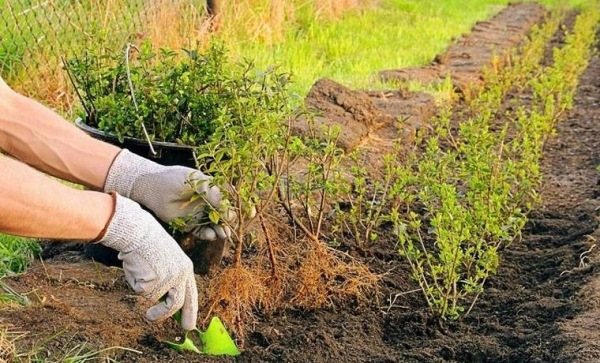

When planting the Cotoneaster, the size of the plant crown is taken into account, and therefore the distance must be maintained from 0,5 to 2 m
The soil for the culture should consist of the following components:
- Sand;
- Peat compost;
- Sod land.
All components are taken in a 2: 1: 2 ratio… It is also recommended to add about 300 grams of lime per square meter.
When planting seedlings, it should be borne in mind that the crown of the bush occupies a fairly large area, so the seedlings should be planted at a distance of at least 0,5 meters, and preferably 2 meters.
The planting hole should be about 60 cm deep. The root system is immersed in it along the neck.
It is recommended to lay a high-quality drainage layer at the bottom of the planting pit. For these purposes, brick chips or gravel are suitable. Drainage layer thickness – at least 10 cm.
Care
There is nothing difficult in caring for a culture. However, in order for the plant to grow decorative and healthy, it is recommended to pay attention to it.
Feeding
With the arrival of warm spring days, it is required to apply fertilizer to the soil. You can use urea or kemiru wagon as a top dressing..
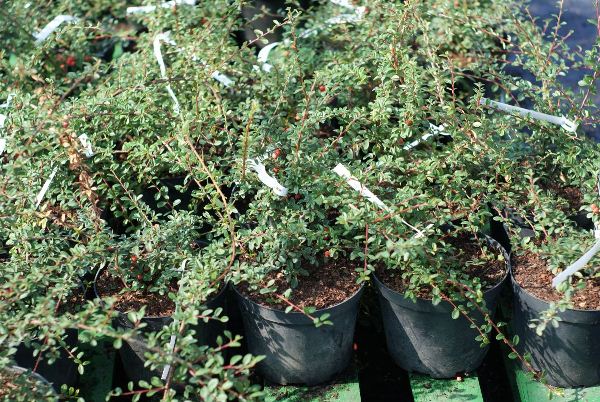
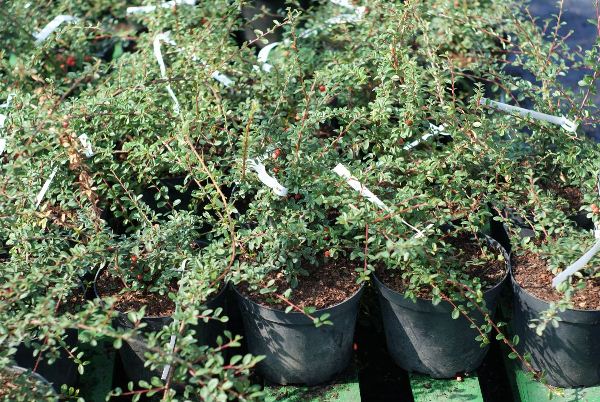
In order to get the most beautiful cotoneaster bushes, they can be fertilized
Fertilization is also required at the end of May before flowering begins. It can be potassium sulfate or superphosphate granules.
Watering
The horizontal cotoneaster is a drought-resistant shrub. therefore it only needs to be watered once a month… However, if the weather is too hot and dry, then watering can be increased up to once every two weeks.
One bush requires about 7 liters of water… At the time of watering, it is important to weed the soil around the trunk, and after watering the soil is well loosened and mulched. It is recommended to use peat as mulch.
Watering the shrub is required only in the summer.
Trimming
Since shrub is characterized by rapid growth and strong branch growth, it is recommended to trim it periodically. The cotoneaster responds well to pruning. It stimulates the growth of new young shoots.
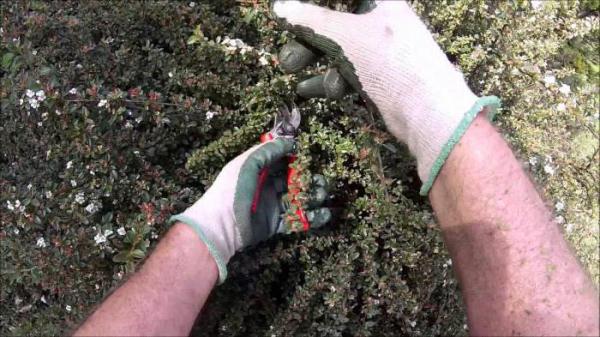
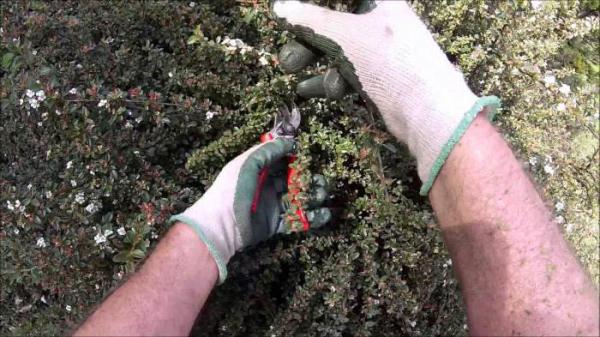
Pruning of the Horizontal Cotoneaster is best done in March, before the sap flow begins.
Pruning will give the shrub the desired shape.… Cutting of shoots by a third is allowed.
How to save in winter?
The culture is thermophilic, so it needs shelter for the winter.
For this branches need to be bent to the ground and covered with a peat layer or dry fallen leaves. It is advisable to mulch the soil around the central shoot with peat.
Cotoneaster brilliant, planting and care

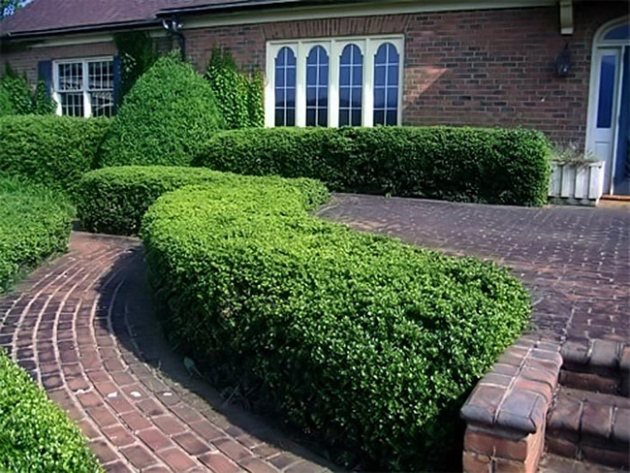
Landscaping of a site is a complex and time-consuming process that requires a lot of effort and imagination. First of all, you need to pick up interesting and unusual plants with which you can create bright compositions, hedges and flower beds.
- Stage 1. Selection of planting material
- Photo of a brilliant cotoneaster in landscape design
Alternatively, you can use a cotoneaster, or rather its most popular type – a brilliant cotoneaster. This plant is distinguished by its special unpretentiousness and rather decorative appearance. The foliage of the brilliant cotoneaster looks especially bright, which in summer has a bright green color, and in autumn it acquires a purple color. By planting such a plant on your site, you can create unusual and unique compositions and garden hedges. And this, in turn, will become a decorative decoration of the personal plot.
In this article, we will take a closer look at the features and description of the brilliant cotoneaster, and also learn about its popular forms. Let’s note the main nuances of the cultivation technique of this crop.
Features and description of the brilliant cotoneaster
The brilliant cotoneaster is a deciduous shrub that has a fairly dense crown and is easy to prune. The cotoneaster belongs to the large Pink family. Eastern Siberia is considered the homeland of this ornamental shrub, but in nature this plant is already quite rare. On the territory of Siberia, the brilliant cotoneaster can be found in the thickets of bushes, as well as in the undergrowth.
The name of this culture was given by the Swiss botanist Kaspar Baugin. It consists of two parts, the first of which is “cotonea”, meaning “quince”, and the second “aster”, translated from Greek “having a form, similar.” In simple words, a cotoneaster is a plant very similar to a quince. The similarity of these two crops is dictated by the common features of the leaves of some species and varieties.
Also, it is worth remembering that dogwood and cotoneaster are completely different plants. Edible berries can only be obtained by growing dogwood.
Description of the brilliant cotoneaster:
- The brilliant cotoneaster is a deciduous shrub of medium height, although many species of the same family belong to evergreen crops and can delight with their beauty all year round.
- The shrub of the plant is formed by erect stems that are very densely spaced to each other.
- Young shoots are covered with a small fluff, which disappears as the plant grows.
- The brilliant cotoneaster can reach a maximum height of 2 meters.
- The crown is very lush and dense, abundantly covered with small ovoid or oblong leaves.
- The leaves are small, on average they can reach from 2 cm to 6 cm. Their surface is smooth and shiny, hence the name of the species – brilliant cotoneaster.
- One of the main decorative features of the brilliant cotoneaster is its foliage, and more specifically the color of its leaves. They are dark green in summer and turn reddish or purple in autumn.
- The shrub blooms in the month of May with small flowers of white or pink color. which can be located singly or collected in racemose or corymbose inflorescences of 6-12 flowers.
- The flowering of the brilliant cotoneaster lasts for a month.
- Fruits on this shrub appear 4 years after planting. They are also the decorative value of this culture. In the fall, a shrub with purple leaves and black glossy fruits looks very interesting.
- The fruits of the cotoneaster are shiny spherical, black, ripen in early September and stay on the branches until the very frost.
- This plant is characterized by fast growth and longevity. It is great for creating hedges that take any shape and tolerate pruning well. A shrub can grow in one place for more than 50 years.
- The birthplace of the brilliant cotoneaster is the territory of Siberia, so it perfectly tolerates our frosts and cold weather. It is for this reason that landscape designers and gardeners love it so much.
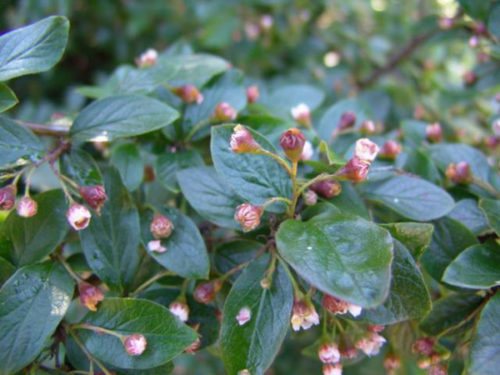
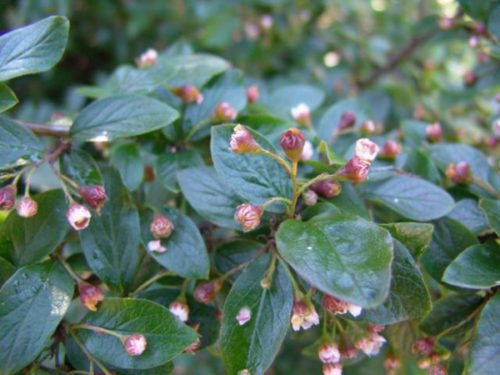
Popular types and varieties of cotoneaster
The brilliant cotoneaster is widespread in Russia, but it is very difficult to find it in nature, it is listed in the Red Book. Often the black cotoneaster and the common cotoneaster, as well as the horizontal cotoneaster, are considered to be one of the forms of this species. However, in most sources, these cultures are classified as independent species. Let us briefly consider the features of the most popular types of cotoneaster on a par with the brilliant one on the territory of Russia.
Black cotoneaster
- The natural habitat of this plant is considered the territory of the Caucasus, part of Siberia, as well as the brilliant cotoneaster. It is found in Central Asia and North China.
- Like the brilliant cotoneaster, this shrub reaches a maximum height of 2 meters.
- The stems of the shrub are densely spaced to each other, have a slightly reddish tint.
- The leaves are also small, up to 6 cm long, dark green in color.
- The flowers are pink, on the bush are arranged in racemose inflorescences, consisting of 5-12 small flowers.
- In terms of growing and growth conditions, this plant is very similar to the brilliant cotoneaster, therefore it is excellent for our harsh climate.
- The only difference between the black cotoneaster is its edible fruits.
Common cotoneaster
- Quite widespread on the territory of our country, the natural habitat is the territory from the North Caucasus to the Baltic States.
- This shrub loves to grow on mountain slopes and sandstones.
- Like the above-described shrubs, it can grow in height up to a maximum of 2 meters.
- Young shoots are covered with a small fluff, which makes it look like a brilliant cotoneaster.
- The shrub is formed by rather densely spaced branches, which create a compact and rounded crown.
- The leaves are oblong, small in size. On average, they can reach 5-6 cm in length.
- It blooms with small pale pink flowers.
- The difference from the brilliant cotoneaster is the color of the fruit – it is red.
These types of cotoneaster have very similar features to the brilliant cotoneaster. This also applies to the shape of the shrub, the size of the foliage, the size and color of flowers. Therefore, quite often all these shrubs are referred to as one species.
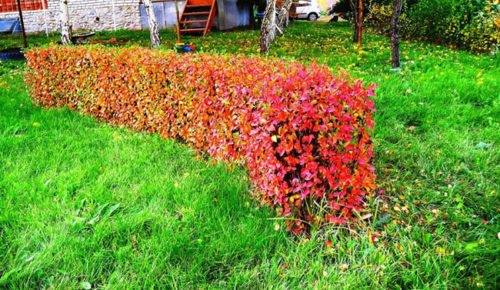
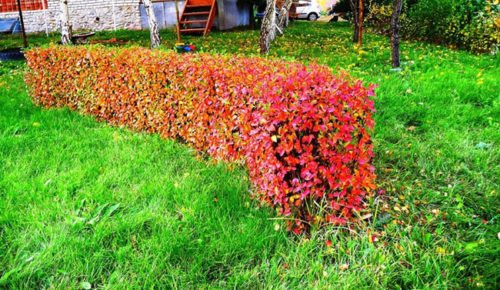
Reproduction of brilliant cotoneaster: the most common ways
If you wish, you can easily grow a shiny cotoneaster on your own on your site. This culture reproduces in many ways, so it is easy to find one that is convenient for everyone. For this type of deciduous shrub, the following methods are characteristic: seed propagation, cuttings, division of the bush and propagation by layering.
Seed Reproduction
- This method is used very rarely, since the seeds of the brilliant cotoneaster have a very low percentage of germination. And the likelihood that you will receive quality seedlings for planting is very small. Seed propagation is used mainly in breeding.
- First of all, you need to prepare the planting material for this plant. To do this, after full ripening of the fruits on the bush, it is necessary to collect. Try to collect as many fruits as possible, as the seed germination of this crop is very low.
- Next, the fruits need to be dried a little, and then carefully separate the pulp from the seeds.
- After that, all the seeds must be rinsed and left in water. Remove all floating seeds, they still will not give a good harvest.
- The rest are taken out of the water and laid out on a dry surface to dry.
- Next, prepare the container, mix the seeds with peat and sand and moisten well. After that, the container must be placed in a refrigerator at a temperature of 0 degrees for stratification. This process will last until spring.
- In the spring, after the snow melts, stratified seeds can be sown directly into open ground, having previously prepared a place for planting. Seeds are sown in the beds, which must be done at a distance of 15 cm from each other.
- You can also plant the seeds of the brilliant cotoneaster in prepared containers. First, they need to be filled with a soil mixture consisting of both peat and sand. It will be possible to plant seedlings in open ground only a year later in the spring.
- However, you should not expect a uniform and good emergence of seedlings, in the best case, you will receive 60% of the total number of seeds. In addition, fruiting can begin only 4-5 years after planting.
Propagation by cuttings
- This method is easier and more common and allows you to get better results.
- Brilliant cotoneaster can be propagated by green cuttings and woody cuttings, which are harvested at different times.
- Green cuttings for propagation must be harvested in the second half of June. On the bush, choose the strongest and most flexible shoots that need to be cut into a length of 10-15 cm. The main thing is that there are at least 2 internodes on the planting material.
- Hardwood cuttings should be harvested at the end of autumn. For this, strong and healthy shoots are also selected. Until spring, they are tied up and stored in the basement. In the spring, cuttings should be cut 10-15 cm long. Make sure that each cutting has 2-3 buds.
- Before planting, the planting material must be treated with a special root-forming stimulant solution, for example, Kornevin. It is necessary to keep the planting material in a container with a solution within XNUMX hours.
- It is necessary to root the cuttings in a greenhouse or greenhouse. You can also cover the planted seedlings with ordinary film.
- Before planting, prepare a soil mixture, which should consist of fertile soil, peat and sand.
- Cuttings root at an angle of 45 degrees, they need to be buried by about 5-6 cm.
- Further care of the cuttings consists in regular watering with warm water, loosening the soil around the planting material and ventilating the greenhouse. After rooting, the seedlings must be transplanted into open ground at the chosen location. It should be remembered that even with cuttings, the percentage of strong and healthy planting material is 30-95%. Therefore, the care of the cuttings must be very careful and attentive.
Breed division multiplication
- This is another method of reproduction of brilliant cotoneaster, which is easy to apply independently on your site. It needs at least one plant bush.
- It is best to divide the brilliant cotoneaster bush in the spring, until the buds appear.
- Take a sharp shovel and carefully remove the shrub from the soil, being careful not to damage the root system of the shining cotoneaster.
- With a sharp knife, divide the cotoneaster root system into the required number of parts, the main thing is that each delenka has young roots and buds.
- Prepare planting holes for young plants, fill in a layer of drainage and fertile soil.
- This method is most often used during transplantation of an adult plant or its renewal.

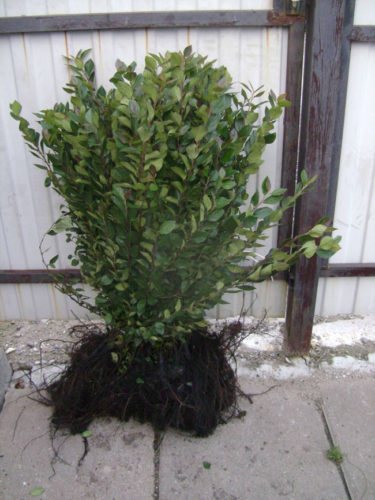
Reproduction by layers
- It is rather difficult to propagate a brilliant cotoneaster in this way, most often it is propagated by creeping forms of a cotoneaster. But you can still try.
- In spring, choose the strongest and most flexible shoots on the shrub, it is better to give preference to the lower shoots themselves.
- Dig small grooves around the shrubbery and gently fold the selected shoots into them.
- Sprinkle them with soil, leaving only the top of the branches.
- Cutting care consists of watering and weeding.
- In late summer and early autumn, with sufficient rooting of the cuttings, young shoots can be detached and planted in the selected area.
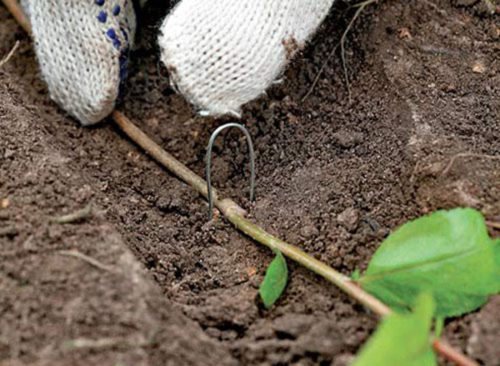

Preparation steps before planting brilliant cotoneaster
To get a beautiful and ornamental shrub, you need to make a little effort and carefully prepare. It is important to prepare high-quality and healthy cotoneaster seedlings, as well as come up with a planting plan and find the most optimal place for planting a plant on the site. With due observance of all the rules, you will get a beautiful plant that will certainly decorate your site.
Stage 1. Selection of planting material
- The choice of brilliant cotoneaster seedlings will be the key to obtaining a beautiful shrub.
- Saplings can be obtained using green and woody cuttings rooted in a greenhouse.
- An easier way is to buy a shiny cotoneaster in a specialized store or agricultural company that professionally breed various plants.
- When buying, be sure to carefully examine the seedlings. Young plants should be free of visible damage and signs of pests and diseases.
- If you buy seedlings in containers, pay attention to the soil in them. It must be clean and damp.
- Before buying, think over the composition that you ultimately want to get on your site.
- The brilliant cotoneaster is best planted in open ground after leaf fall in the fall, so it is best to buy seedlings with a closed root system so that the roots do not dry out. Seedlings in containers can stand until the planting time you want. Open-rooted plants are best purchased immediately prior to planting.
Stage 2. Choosing a landing site
- The brilliant cotoneaster prefers to grow in sunny areas, but it will feel great in the shade.
- Find a place on the site that is protected from strong winds and drafts.
- It is important that the groundwater is deep enough, since the root system of this culture does not tolerate excess moisture.
- The choice of a place for planting a brilliant cotoneaster will directly depend on the landscape design you need. This plant can be planted along garden paths as a curb, and is also ideal for creating hedges.
- You can choose a place against the background of the lawn for a single planting of a brilliant cotoneaster.
- Alternatively, give this shrub a place among other plants, both ornamental and flowering.
Stage 3. Selection and preparation of soil for planting
- The brilliant cotoneaster is not very picky about the composition and fertility of the soil.
- Before planting, it is important to carefully dig up the area chosen for planting the brilliant cotoneaster seedlings. You need to process the soil with about two shovel bayonets.
- While digging, you can add a little peat and sand, as well as rotted manure.
- Digging up the soil is possible some time before planting. If you are planting seedlings in the spring, then prepare the soil in the fall. If the planting is autumn, then the processing of the site is carried out in the spring. Before the very process of planting the cotoneaster, the soil is once again loosened and leveled.
Planting technology of cotoneaster brilliant
- The brilliant cotoneaster is best planted in open ground in the fall after leaf fall, although spring planting is also allowed.
- Before planting, thoroughly loosen the soil again, if before that you carried out the spring processing of the selected area. If such a process was not carried out, then the place must be dug up and leveled.
- Purchased shining cotoneaster seedlings must be poured into containers with water in order to be carefully removed later.
- Prepare planting holes and potting soil in the selected area. Planting holes should be 50 cm deep and 50 cm wide. It is also important to maintain a certain distance between the cotoneaster bushes. It should be approximately 50-200 cm depending on the planting plan. The soil mixture for planting should consist of peat, turf and sand, you can also add rotted manure and lime.
- At the bottom of each hole, be sure to add a layer of 20 cm drainage to prevent water stagnation at the plant’s root system. Broken brick, gravel or expanded clay can be used as drainage.
- Pour a small hill of the prepared potting mix onto the drainage layer.
- Carefully remove the cotoneaster saplings from the containers and place them in the planting pits.
- Carefully fill the seedlings with soil, while making sure that the root collar is strictly level with the soil surface.
- Press down lightly with your hands and water liberally.
- After watering, the trunk circle of each plant can be mulched with dry peat or tree bark.
- When planting a hedge from a brilliant cotoneaster, it is necessary to dig not holes, but one trench.
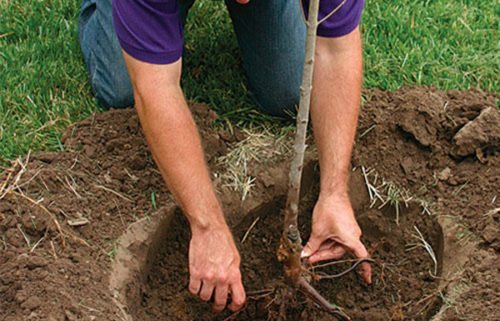
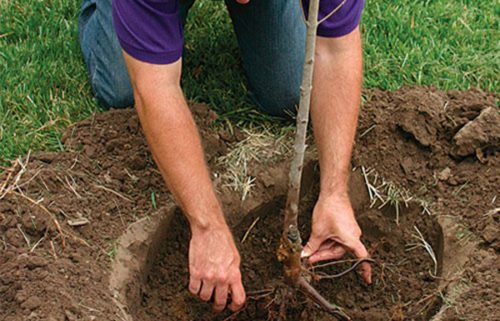
Agrotechnics of growing brilliant cotoneaster: secrets and nuances of care
The full growth and development of a plant depends on your attention to it. Caring for a brilliant cotoneaster consists in timely and regular watering, loosening and mulching the soil, as well as correct pruning and protection from pests and diseases. Let’s take a closer look at everything.
Watering
The cotoneaster is shiny, not demanding on moisture, most often you need to water a young plant. This will promote better rooting of the shrub. Further watering reduces and moisturizes the soil around the plants as needed. Cotoneaster shrubs require an increase in the amount of water during periods of severe droughts and heat.


Loosening and mulching
Periodically, after watering, the soil in the trunk circle must be loosened to saturate it with oxygen. During this process, all weeds that interfere with the growth of the plant are removed. To reduce the number of loosening and watering, you can periodically pour mulch into the trunk circle. Use dry, clean peat or tree bark as mulch.
Additional fertilizing
- During the planting of the brilliant cotoneaster, lime and rotted manure are added to the planting pits.
- Before active vegetation, each plant must be fertilized with nitrogen fertilizers, for example, urea.
- In the future, in the middle of summer, cotoneaster shrubs can be fed with potash and superphosphate fertilizers.
Pruning cotoneaster brilliant
- Brilliant cotoneaster grows very quickly, so pruning is an integral part of caring for this plant.
- Sanitary pruning can be carried out at any time of the year, during which all damaged and dry shoots are removed.
- An adult plant sometimes requires rejuvenating pruning, which is done in the spring before budding.
- The main pruning is formative, which is also carried out in the spring before the start of the active growing season. During this pruning, the shrub can be given absolutely any shape: a ball, a square and any intricate geometric shapes. During pruning, you need to take sharp scissors and remove a third of the growth on the annual shoots.
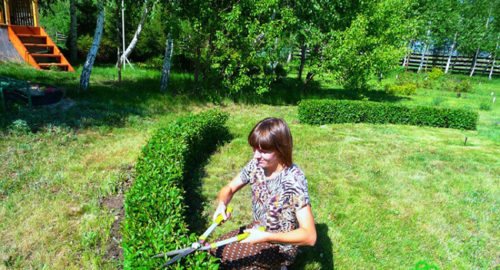

Fighting diseases and pests
The brilliant cotoneaster is resistant to various diseases and pests. However, occasionally this plant also needs your protection.
Pests:
- Spider mite. This pest manifests itself as a thin web on the leaves and stems of the plant. To combat it, you can use special drugs, for example, “Actellik”.
- Aphid. The signs of this pest are shriveled and withered leaves. Insecticides can be used to combat.
- Mole. It can also sometimes attack the cotoneaster. For the fight, you can use special drugs: “Rogor”, “Korbofos”.
Diseases:
- Fusarium. This disease is most common in this plant. Parts of the plant begin to rot, which can lead to the complete death of the shrub. It is imperative to remove all affected parts and treat the entire plant with fungicides.
Shelter for the winter
The brilliant cotoneaster is a plant resistant to our severe frosts and winters, so no special shelter is required.
The use of a brilliant cotoneaster in landscaping
- The brilliant cotoneaster is a favorite plant of landscape designers, because you can create the most incredible and beautiful garden compositions from it.
- This shrub is great for creating hedges.
- It can be used to frame curbs and garden paths.
- This plant also looks great in single plantings against the background of a green lawn.
- You can easily combine brilliant cotoneaster with other plants.
Photo of a brilliant cotoneaster in landscape design
You can more clearly see all the features and options for using the brilliant cotoneaster in landscape design in the photos below.
The brilliant cotoneaster is an excellent ornamental plant that, with proper care, will become an irreplaceable decoration of your site.
Diseases and pests
Among the most common pests, one should highlight:
Aphids are found with shriveled and gradually drying out leaves… To destroy the pest, you should use drugs such as “Metaphos” and “Karbofos”. And for prevention, the shrub is sprayed with nitrofen.
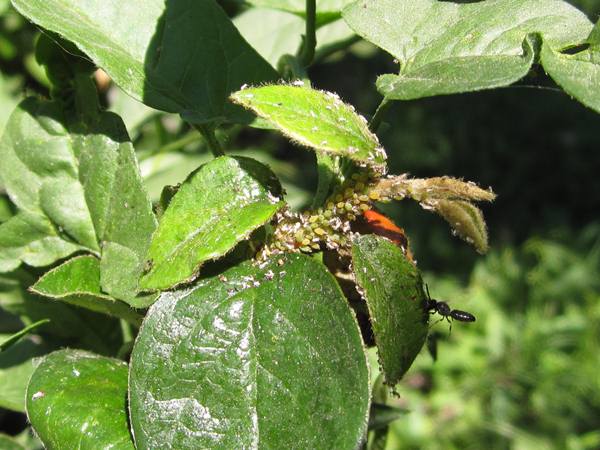
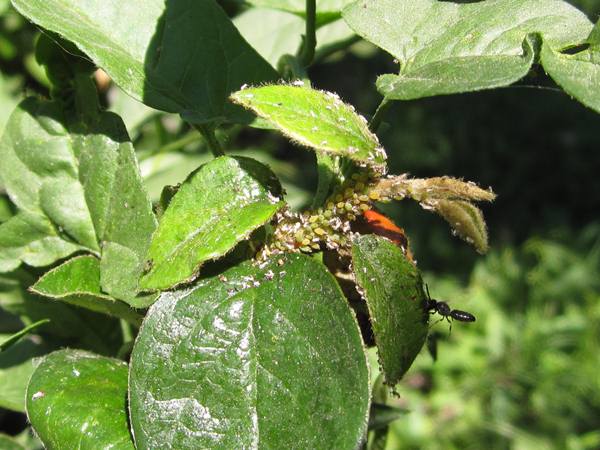
Aphid colony on the Cotoneaster bush
The moth leaves narrow passages on the leaves… To kill moths, “Karbofos” and “Ammorphos” are used.
The most common disease is fusarium… This is a fungal infection. If found, it is required to destroy all affected shoots. If the lesion is severe, then it is better to transplant the shrub and disinfect the soil.
Methods of reproduction
The cotoneaster reproduces in the following ways:
- Seeds;
- Cuttings;
- Layers.
Seeds
It is ineffective to propagate by crops by seeds, since the seeds have a very low germination capacity.
First of all, you need to select suitable seeds. For this all collected seeds are placed in a container with water… Those that surfaced can be safely thrown away, and the rest can be sown.
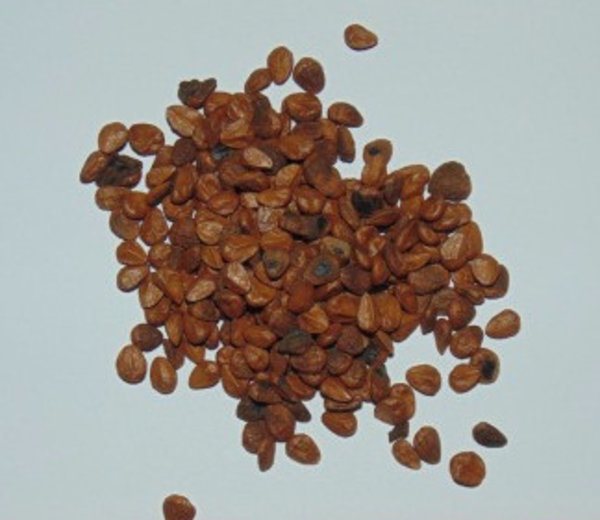
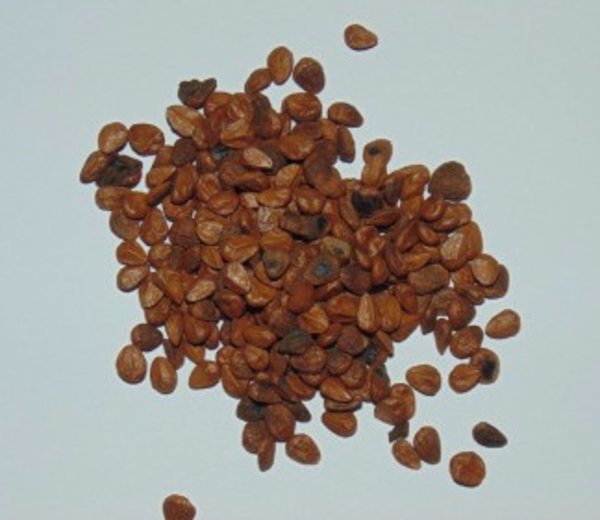
The seeds of the horizontal cotoneaster have a very low germination rate (about 50%)
However, a rather long period of time will pass between sowing and the first shoots, since germination is extremely difficult and therefore takes a long time… Sowing seeds is done in the fall.
Cuttings
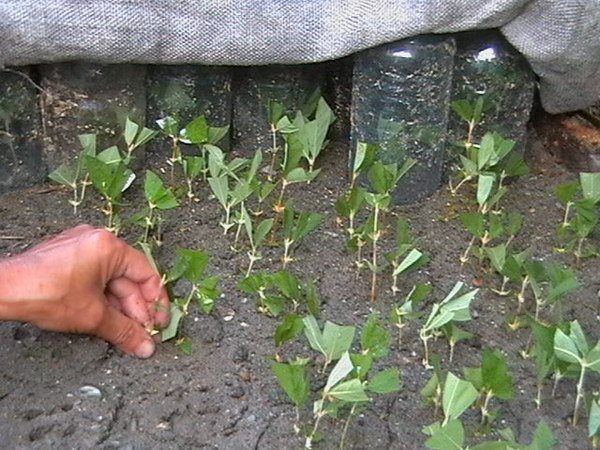

Best of all, cotoneaster cuttings develop on a mixture of peat and sand, taken in equal amounts
For propagation by cuttings you will need:
- Trimming the top escape;
- Hold the cutting in a growth stimulant solution or process the slice with the help of Kornevin;
- Plant in loose soil and cover with glass or a plastic bottle;
- Shank needed water regularly, and ventilate in the heat.
It is advisable to root the cuttings in June.
How to propagate a cotoneaster by layering?
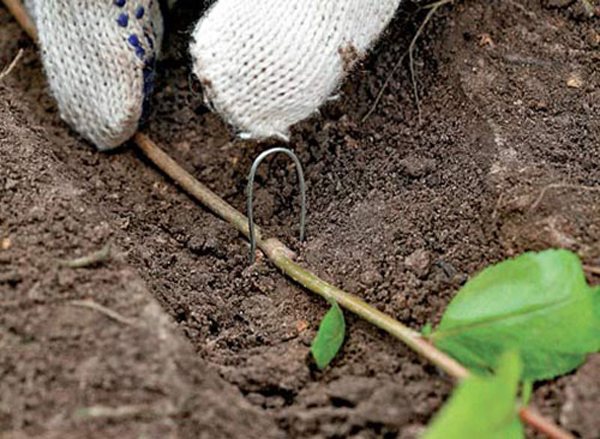
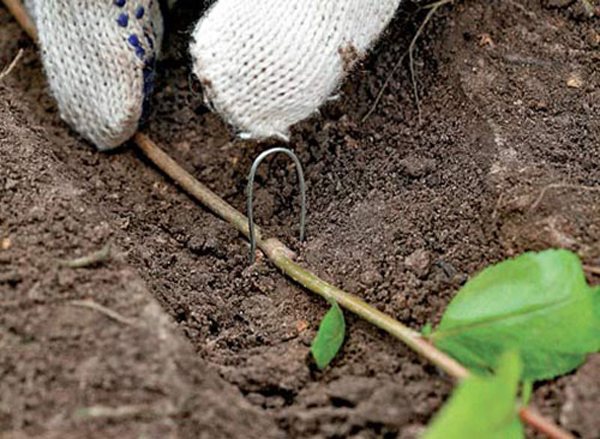
The horizontal lower branches of the Cotoneaster can give roots in a couple of weeks when they come into contact with the ground.
- Bend down a young shoot to the ground and pin with a bracket;
- Around the staples pour a pile of peat or humus;
- The next year cut the escape in spring time and transplant a new seedling to another site.
General information
Features of growth and life cycle
In one area, a shrub can grow up to 50 years with proper care. Given that this culture is unpretentious, this is quite likely.
Flowering occurs annually in spring, lasts for 3 months.
The bush grows very quickly, and therefore needs formative pruning.… This cotoneaster got its name due to the fact that its branches grow not vertically upwards, but horizontally along the surface of the ground.
Application in landscape design
The horizontal cotoneaster is often grown in elevated areas, in alpine slides and rocky gardens.

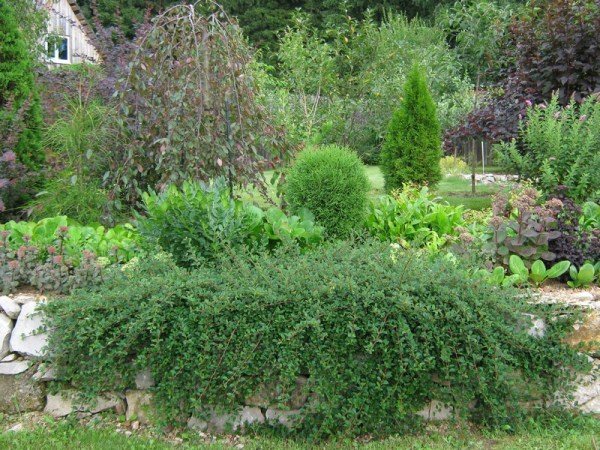
Gardeners and designers often create compositions with the participation of the Horizontal Cotoneaster, dwarf representatives of conifers and flowering shrubs
It is used in both single and group landings. It goes well with both deciduous and coniferous crops… The proximity of the horizontal cotoneaster with variegated bushes is especially good.
It is also used to create hedges, since its crown is dense and lends itself well to formative pruning.
Where to buy seeds?
| Name | Where can I buy | Price |
| Horizontal cotoneaster | Online store “Adenium Siberia” | 20 rubles (2 pcs.) |
| Coral extravaganza | Online store farmer-online.com | 45 rubles (0.1 g) |
| Coral extravaganza | Online store farmer-online.com | 35 rubles (0,1 g) |
A creeping cotoneaster and a horizontal cotoneaster are one and the same. In Latin, the name of this shrub sounds like cotoneaster horizontalis.
What is a creeping cotoneaster
The horizontal cotoneaster (creeping) belongs to the genus of pink – evergreen or deciduous shrubs with a fast growth rate. All varieties of plants are undersized lush shrubs of one and a half meters in height, less often they are found in the form of low trees. Of all the varieties, the horizontal cotoneaster in landscape design is most in demand for decorating summer cottages and the local area.
The horizontal cotoneaster has sprawling and highly branching shoots, covered with rounded wide leaves about a centimeter in diameter. During the growing season, they have a rich green color, and in the fall they are repainted in crimson tones.
The flowering period falls in the spring and lasts 2-3 months. True, this process is almost imperceptible, since the red-pink flowers are very small. With the onset of autumn, spherical scarlet fruits ripen on the cotoneaster, about 5 mm in diameter, and hang on the shoots until the first frost.
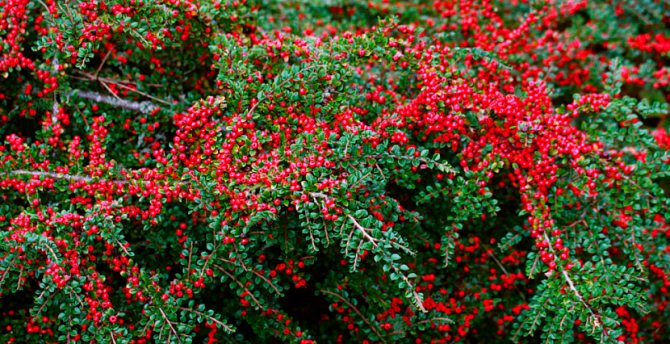

In the horizontal cotoneaster, the fruits are not poisonous, but it is not recommended to eat them Source www.greenmarket.com.ua
With proper care, the cotoneaster can retain its decorative qualities for up to 50 years. During this time, no transplant is required. True, due to the accelerated growth, the shrub must be systematically cut off, otherwise it will fill all the free space around.
Sorts
Thanks to breeding work, the following varieties were bred:
Ordinary
Cotoneaster Ordinary
It unpretentious and frost-resistant varietal variety… It is distinguished by the black color of the fruit and the shiny surface of the foliage.
Multi-flowered
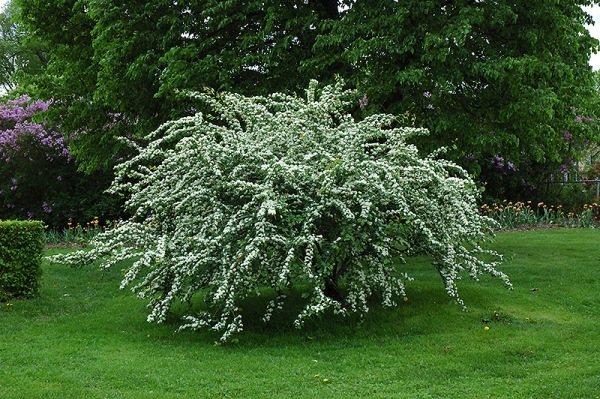
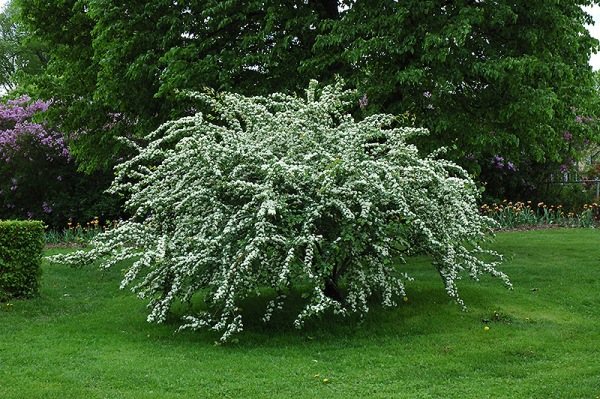
Cotoneaster Multi-flowered
It is a shrub that can grow up to 3 meters in height… The flowers are collected in inflorescences in the form of scutes, the leaves are light green in summer, and turn crimson in autumn.
Pressed

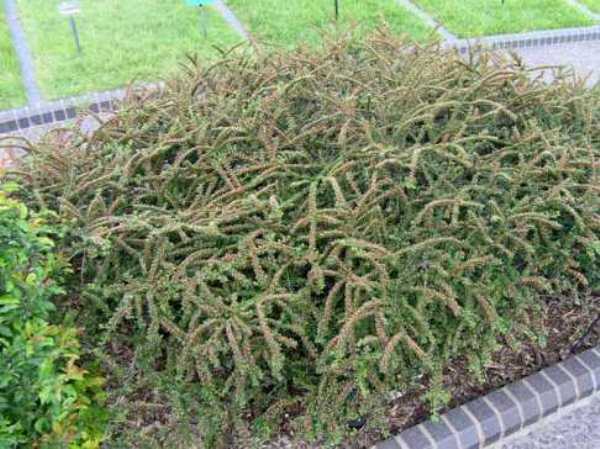
Cotoneaster Pressed
The variety is distinguished by creeping branches that grow low to the ground. The annual growth is very small. Height is no more than half a meter.
Chokeberry
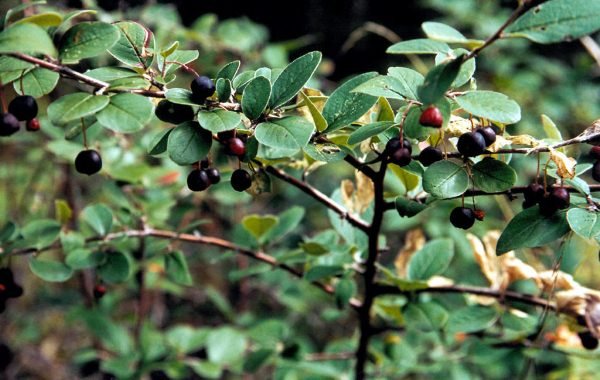
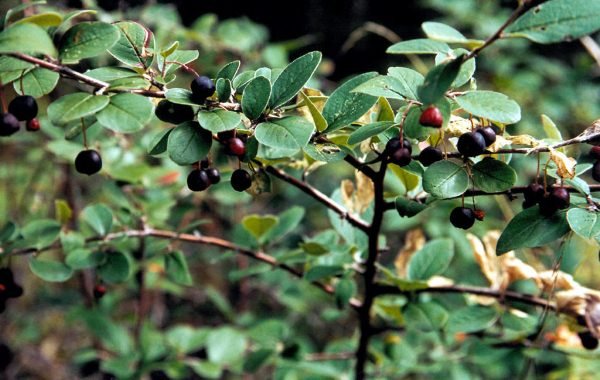
Black cotoneaster
The variety is distinguished by black fruits. Flowering begins from the 5th year of life. Flowering continues throughout the month… Height – about 2 meters.
Red-fruited
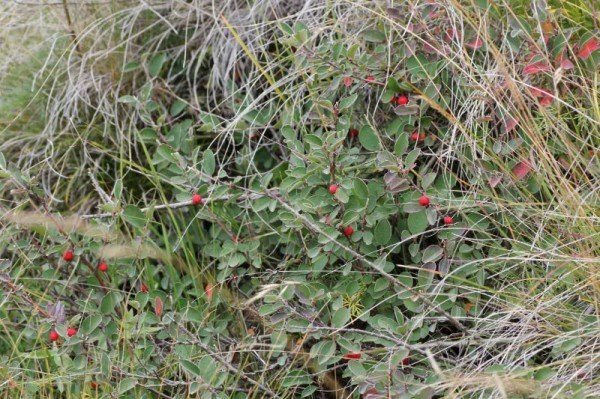
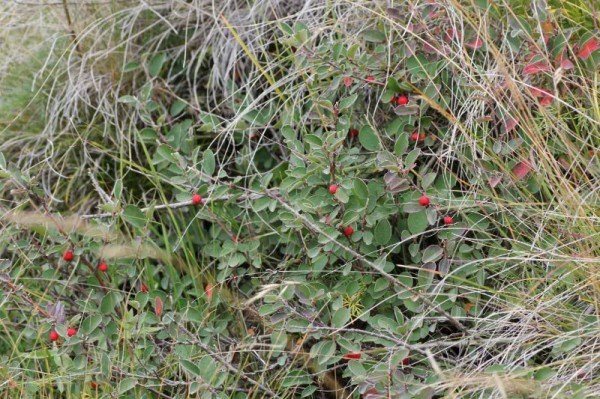
Cotoneaster Krasnoplodny
Visually, it differs little from black-fruited, except for the color of the fruit. In this variety, it is bright red. The variety is frost-hardy and suitable for growing in central Russia.
Shiny horizontal
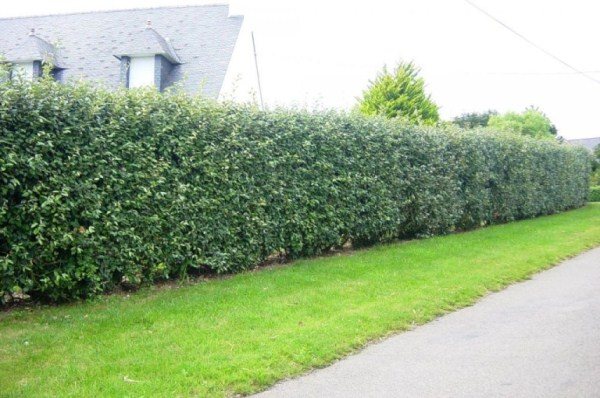

Cotoneaster Shiny horizontal
One of the most popular varieties of horizontal cotoneaster. Height – about 2 meters. Leaves have a shiny surface… In the spring-summer season, they are green with a silvery sheen, and in the fall they acquire all shades of red and yellow.
Variegatus
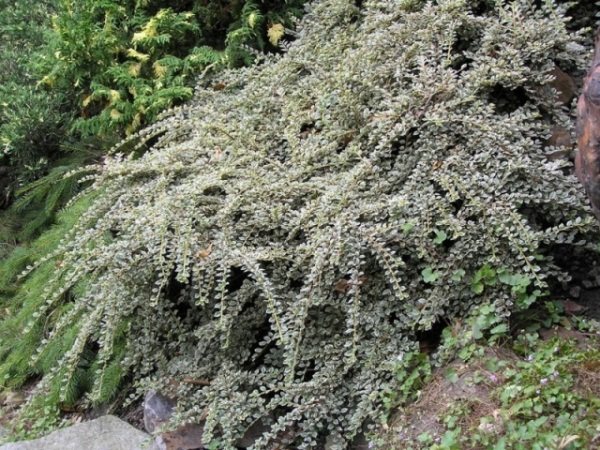

Cotoneaster Variegatus
This is an evergreen shrub no more than 30 cm high. On the leaves there is a white border with a cream shade.… In the autumn, the leaves turn crimson, while the border retains its color.
Coral extravaganza
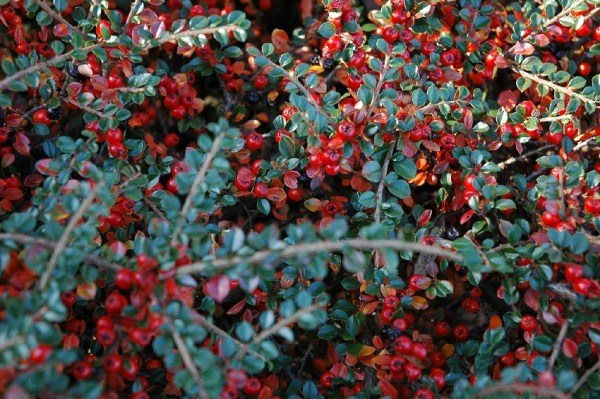
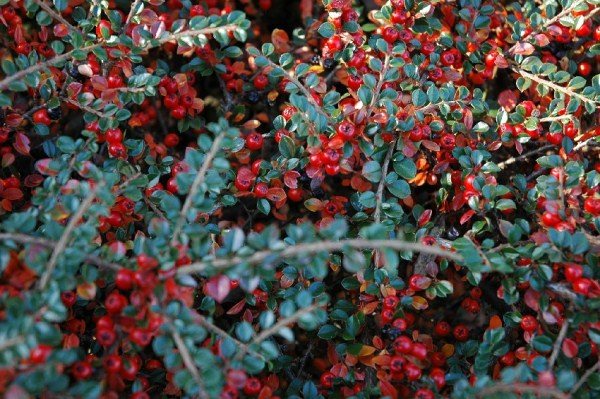
Cotoneaster Coral extravaganza
Evergreen culture. It grows up to 50 cm. The crown is spreading. The leaves are dark green in color. In autumn, they turn red. The flowers are small with pinkish petals. Fruits ripen in early autumn, they last for 3-4 months… The fruits themselves are red, have a smooth and shiny surface.
In this way, horizontal cotoneaster – one of the most spectacular types of cotoneaster… Differs in bright color of leaves in the autumn and juicy shades of fruits. The culture is unpretentious. Several varieties of this plant have been bred, so every gardener will find a shrub to his liking. The species is actively used in the design of gardens.
Hedge care: sequence of actions
The correct placement of a brilliant cotoneaster in the form of a hedge, planting and care is the work of an experienced gardener, a master of his craft. A well-thought-out planting plan will bring the desired result. Let us consider in stages what points the care of an ornamental shrub includes.
Additional fertilizing
After the first years of life, when the roots of the plant extract nutrients from the soil, additional elements are needed for growth. In the spring, fertilizers with nitrogen are added, which help the growth processes and build up the green mass.

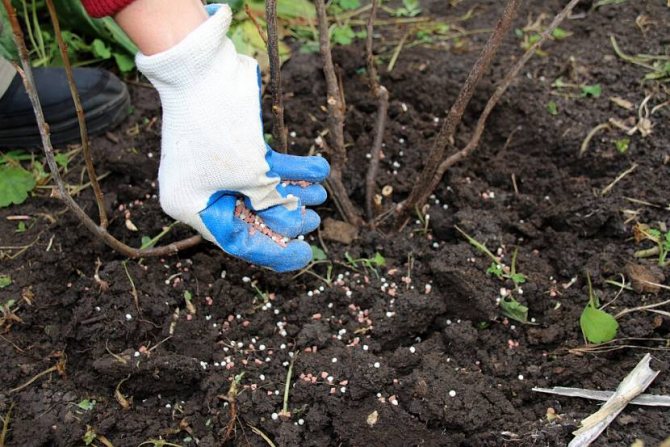
Top dressing add bright colors and decorativeness to the bushes Source farmer-online.com

